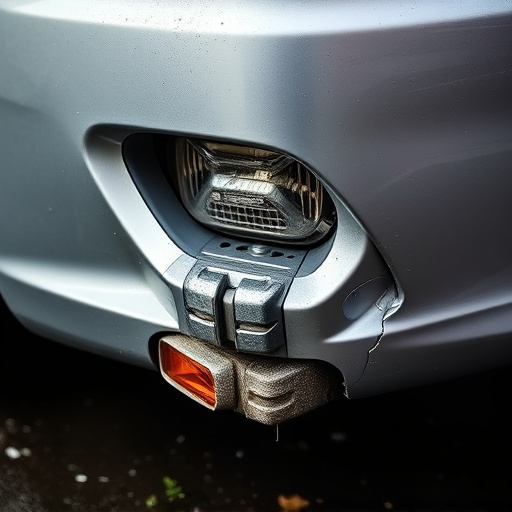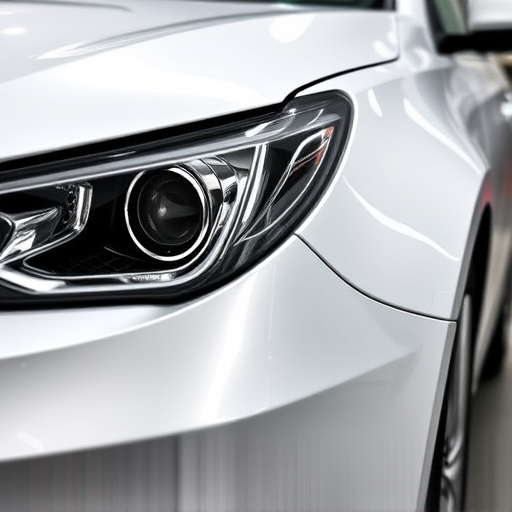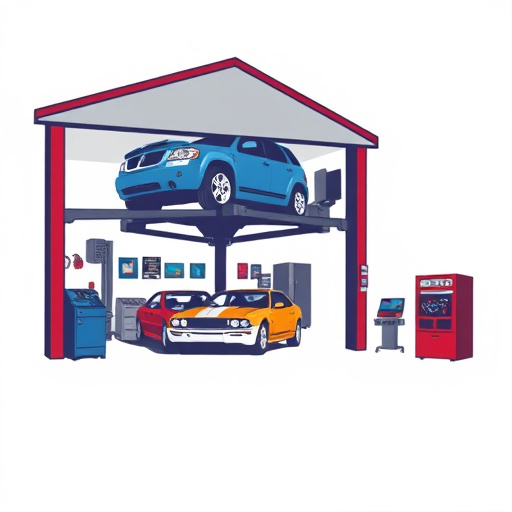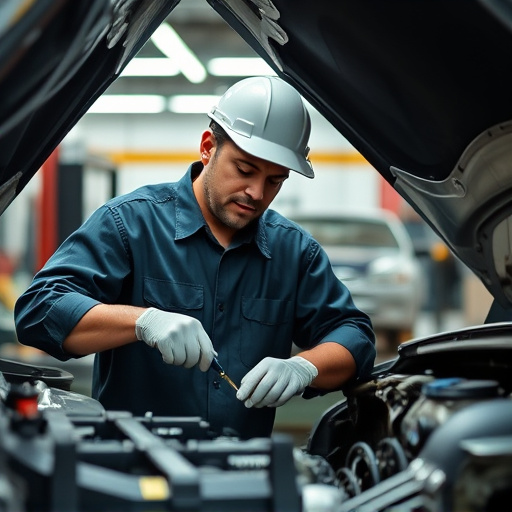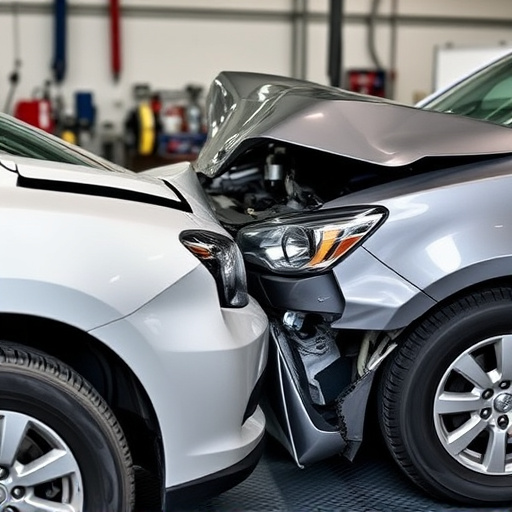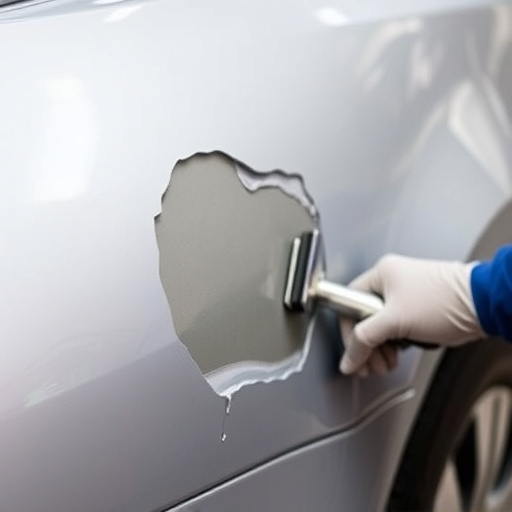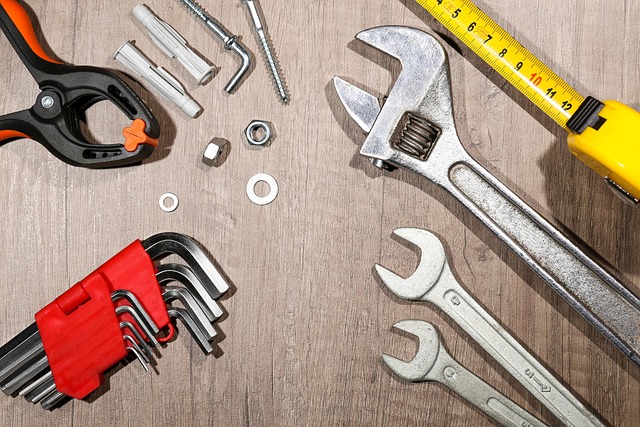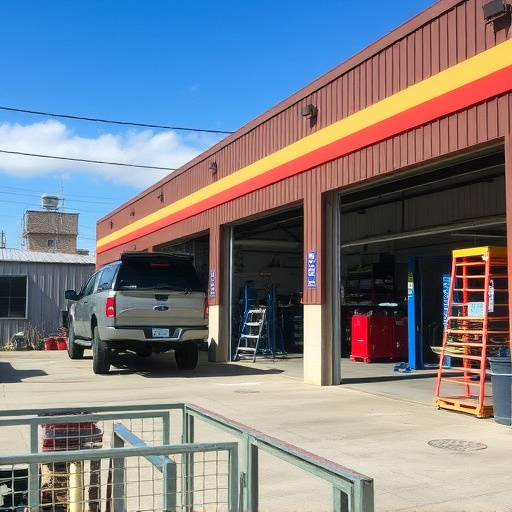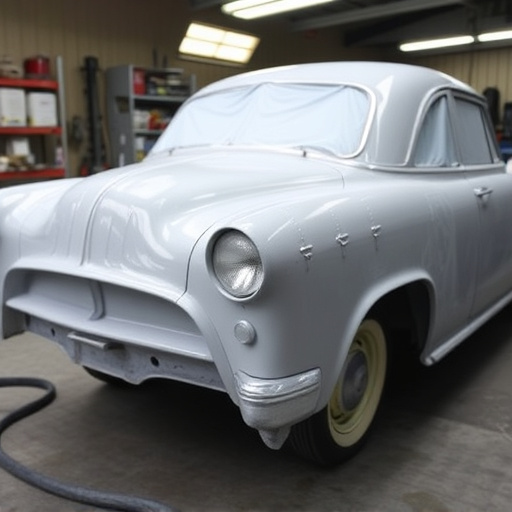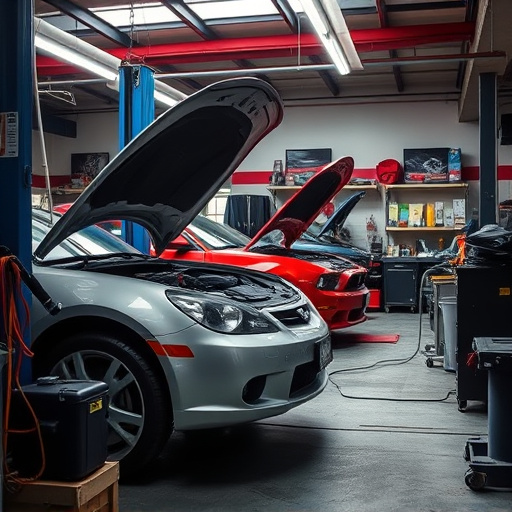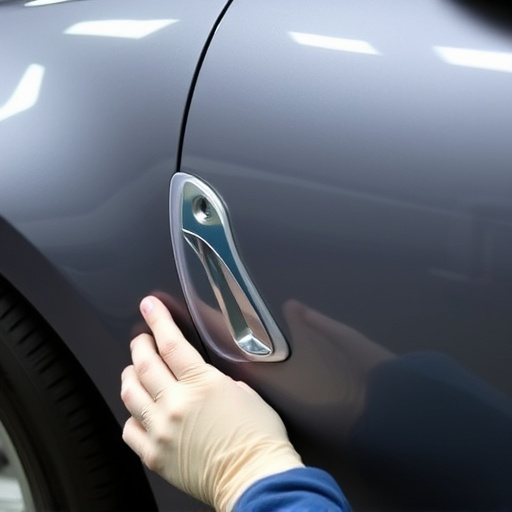Tesla collision diagnostics is a meticulous process handled by certified technicians using advanced tools and techniques to assess structural integrity, electronic systems, and safety features of Tesla vehicles post-collision. This involves inspecting auto body painting, sensitive electronics, and reprogramming critical systems like airbags and autonomous driving features. Certified technicians are crucial for accurate diagnostics, ensuring repairs meet Tesla's quality and safety standards. Proper diagnostics are vital for vehicle performance and safety, with best practices including regular maintenance checks and detailed repair records.
“Uncover the intricacies of Tesla collision diagnostics, a critical aspect of ensuring your electric vehicle’s safety and performance. This article provides a comprehensive guide, starting with an in-depth look at the process and its significance. We explore the expertise required from certified technicians, who play a pivotal role in accurate assessments.
Furthermore, discover the benefits of proper Tesla collision repair and best practices to ensure optimal outcomes, maintaining your vehicle’s advanced technology and safety features.”
- Understanding Tesla Collision Diagnostics: A Comprehensive Overview
- The Role of Certified Technicians in Accurate Assessments
- Benefits and Best Practices for Effective Tesla Collision Repair
Understanding Tesla Collision Diagnostics: A Comprehensive Overview
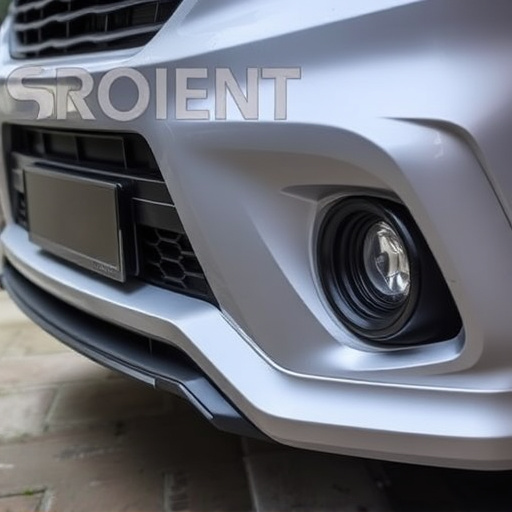
Tesla collision diagnostics is a specialized field that involves the thorough inspection and evaluation of Tesla vehicles after a collision. It’s more than just checking for visible damage; it encompasses a comprehensive assessment of the vehicle’s structural integrity, electronic systems, and safety features. Certified technicians use advanced tools and techniques to diagnose even subtle issues, ensuring the vehicle meets Tesla’s stringent quality and safety standards before repair begins.
This process includes meticulous examination of the auto body painting and bodywork, checking for dents, cracks, or misalignments that could compromise structural integrity. Advanced sensors and scanners are employed to detect damage to sensitive electronic components, such as sensors, cameras, and software modules. Once identified, these issues guide the repair process, which may involve replacing parts or reprogramming systems, including airbag deployment mechanisms and autonomous driving features, ensuring the vehicle is safe and reliable for road use. Car paint services are a crucial aspect of collision diagnostics, as they not only restore aesthetics but also play a vital role in corrosion prevention and long-term vehicle protection.
The Role of Certified Technicians in Accurate Assessments
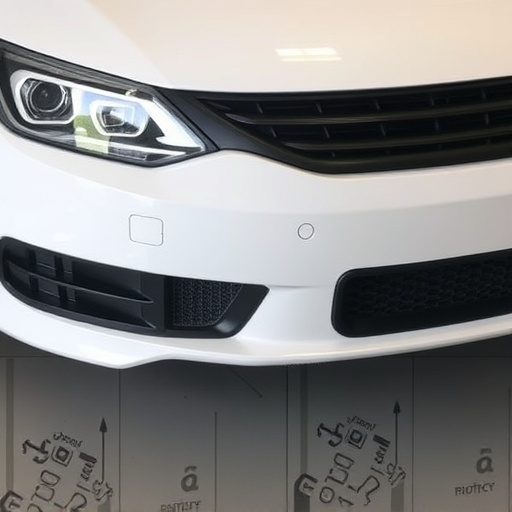
Certified technicians play a pivotal role in ensuring accurate Tesla collision diagnostics. Their specialized training equips them with the knowledge and skills to thoroughly assess any damage sustained by these advanced electric vehicles. By employing state-of-the-art equipment and following stringent industry standards, these professionals can pinpoint issues that might be missed by untrained eyes. This meticulous process involves not just visual inspections but also sophisticated computer scans to detect even subtle anomalies in the vehicle’s systems.
Beyond identifying damage, certified technicians are key to facilitating effective auto body services and vehicle collision repair. Their expertise guides the restoration process, ensuring that Teslas return to their owners in like-new condition. Through their careful work, these specialists not only mend physical damages but also preserve the vehicle’s technological integrity, a crucial aspect often overlooked in traditional vehicle collision repair.
Benefits and Best Practices for Effective Tesla Collision Repair

When it comes to Tesla collision diagnostics, proper repairs are paramount for maintaining the vehicle’s performance and safety. Certified technicians play a crucial role in this process by employing advanced tools and techniques to accurately diagnose any issues. One of the key benefits is ensuring that every component, from intricate electrical systems to sophisticated driver-assistance features, functions seamlessly after an accident. This not only guarantees optimal driving experience but also enhances the car’s overall longevity.
Best practices for effective Tesla collision repair include a multi-faceted approach. Regular auto maintenance checks, even before an incident, can help identify potential vulnerabilities. For instance, tire services and regular bodywerk inspections can reveal weaknesses that might be exploited during a collision. Additionally, keeping detailed records of repairs and service history enables technicians to provide more precise diagnostics, facilitating faster and more accurate fixes. This comprehensive strategy ensures that Tesla vehicles return to the road in as good or better condition than before the collision.
Tesla collision diagnostics, performed by certified technicians, are paramount for ensuring accurate assessments and effective repair. By understanding the intricate systems of Tesla vehicles and adhering to best practices, professionals can deliver top-tier collision repair services. This comprehensive overview highlights the importance of certification, benefits like precision and efficiency, and practical tips for optimal results, making it a valuable guide for both technicians and vehicle owners navigating Tesla collision diagnostics.
